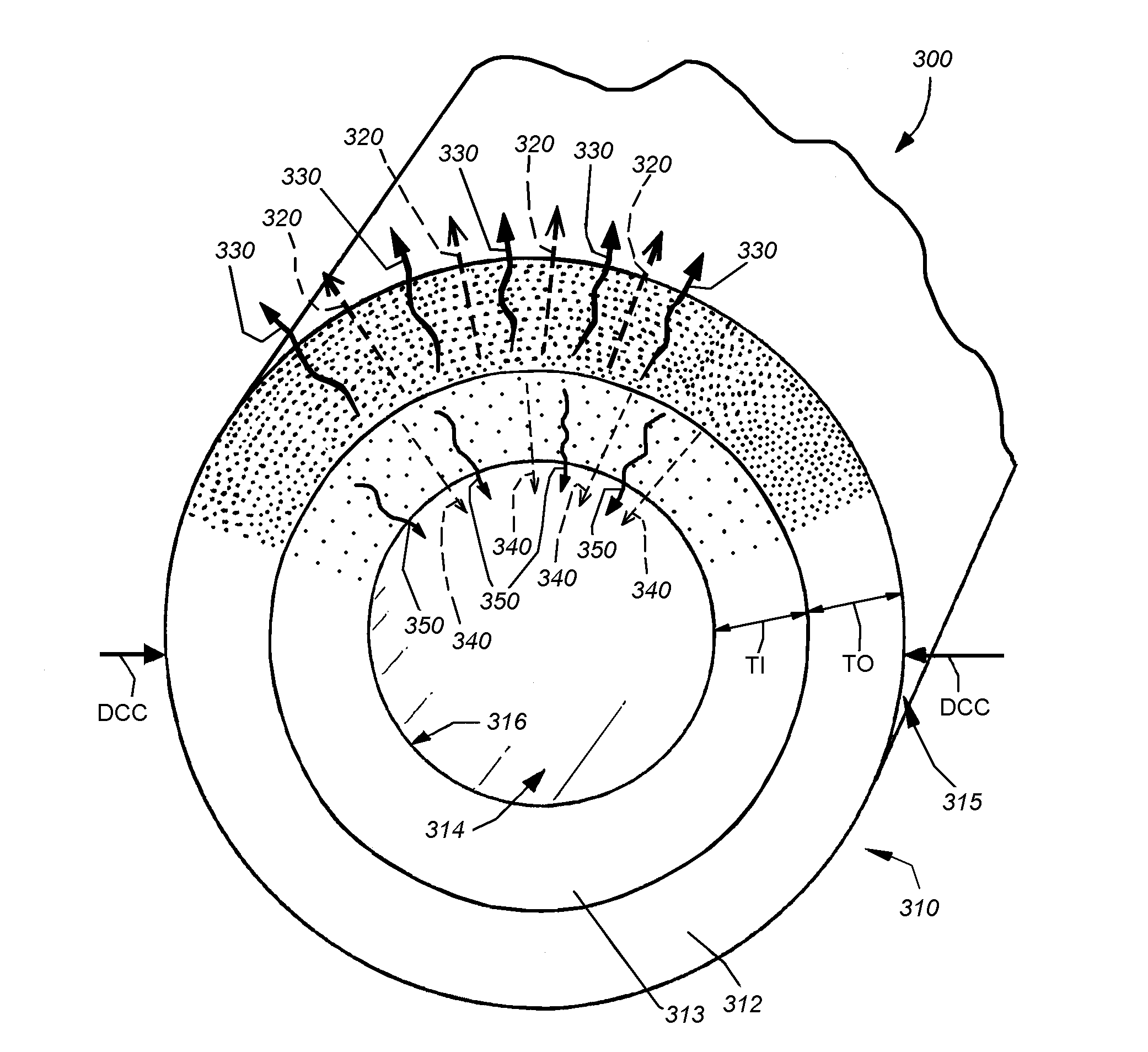Antimicrobial material and method for making the same
- Summary
- Abstract
- Description
- Claims
- Application Information
AI Technical Summary
Benefits of technology
Problems solved by technology
Method used
Image
Examples
Embodiment Construction
[0030]FIG. 1 illustrates a complete, one-stage melt process for the exemplary antimicrobial polymeric material according to an illustrative embodiment of this invention. The process employs the depicted twin-screw compounding extruder 100. The basic operative components of the extruder 100 are well-known in the art, and not described in further detail. In general, the mechanical system of the extruder 100 is driven by a motorized drive 110. This drive rotates twin feed and mixing screws (not shown) housed within a series of interconnected, heated mixture housings 112. The housings 112 are connected to a pair of feeders (feeder #1 (120) and feeder #2 (122)), each of which allow a predetermined component of the mixture to be added to the mix. The fed components are completely mixed as they are driven downstream toward the extrusion die head 130. A plurality of exhaust ports 140, allow removal of any residual mixture in the extruded material. The extruded structure 150, composed of the...
PUM
| Property | Measurement | Unit |
|---|---|---|
| Fraction | aaaaa | aaaaa |
| Percent by mass | aaaaa | aaaaa |
| Percent by mass | aaaaa | aaaaa |
Abstract
Description
Claims
Application Information
 Login to View More
Login to View More - R&D
- Intellectual Property
- Life Sciences
- Materials
- Tech Scout
- Unparalleled Data Quality
- Higher Quality Content
- 60% Fewer Hallucinations
Browse by: Latest US Patents, China's latest patents, Technical Efficacy Thesaurus, Application Domain, Technology Topic, Popular Technical Reports.
© 2025 PatSnap. All rights reserved.Legal|Privacy policy|Modern Slavery Act Transparency Statement|Sitemap|About US| Contact US: help@patsnap.com



